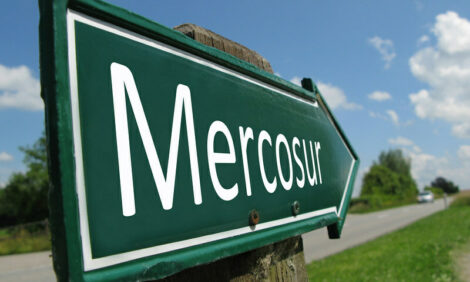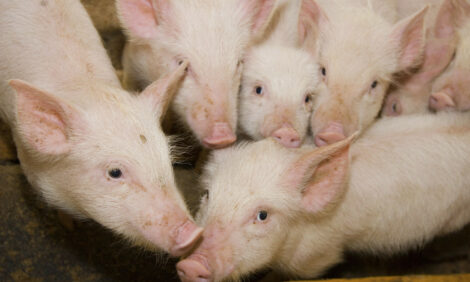



New French Minister Faces Age-old Problems
ANALYSIS - France's new farming and food minister, Stéphane Le Foll, has been meeting representatives from the farming sector and starting in June, he will receive food industry delegations.The former MEP and member of the European Parliament's agriculture committee spearheaded French president François Hollande's successful presidential election.
The recent handover (pictured) from Le Foll's UMP predecessor Bruno Le Maire at the ministry in rue de Varenne was an informal occasion. Le Maire's parting "Bon courage" ("Good luck, you'll need it") was something of an understatement.
During the pause between governments, rue de Varenne published a discussion paper entitled ‘What Future for The French Pig Industry?’ This strangely optimistic document had been waiting in a filing cabinet since January, pending a suitable moment for publication. Its collective author, the Conseil Général de l'Alimentation, de l'Agriculture et des Espaces Ruraux (CGAAER) (the general council for food, agriculture and rural spaces) greeted readers with the words: "...it would be realistic ... to envisage a growth in French production to 27 million pigs a year, that is 1.8 million more than 2010."
The CGAAER game plan involved bolstering added value pigmeat exports, notably to southern Europe, where Greece, Spain and Italy currently take nearly half of France's current pigmeat export volumes. This growing tonnage would help to achieve the CGAAER vision of creating 4,300 new jobs in a more competitive sector.
To launch this grandiose vision, the ministry think-tank proposed high tech pig units "...large enough to be able to manage their waste, applying cutting edge techniques to prevent environmental problems". There is reason to believe that pig industry consultation did not figure on the agenda in this particular planning exercise.
At the end of last week [May 24], Pierre Halliez, director-general of the meat industry union the Syndicat National des Industriels de la Viande (SNIV-SNCP) wrote to Le Foll, welcoming the extended farm to food remit of the new minister.
"It is the only way of putting the French meat production chain (filière) into perspective and something that the industry has been advocating for years," Halliez later wrote in his newsletter.
The SNIV-SNCP letter also mentioned the need to modernise the current economic models as well as the necessity of market regulation to manage commercial relationships with multiple retailers.
"In 2011, we [French pig processors] lost one hundred million euros in the slaughtering and cutting of pigs: about four euros a pig," Halliez told journalists at the beginning of last week.
"This cannot last," the processing industry leader added, warning that the industry faced restructuring, regardless of its views on the subject. Processors are paying higher producer prices but are struggling to recover any increases from multiple retailers, Halliez explained.
In addition, French abattoirs employ a total of about 15,000 staff and pay higher salaries than their German or Spanish counterparts.
In a document published earlier this year, SNIV-SNCP said the gross processor margins on pigmeat ranged between 5.3 per cent and 8.4 per cent, depending on the products involved (pork chops or cooked ham).
This margin covers slaughtering costs, cutting, packing, transport, traceability and marketing costs.
Further down the chain, gross retail margins range from 44.7 per cent to 50.5 per cent, before taking into account any promotional activity. Not that promotions have any impact on retail margins, since offers are funded by suppliers in one way or another.
The pattern is not much different across Europe. In France, food producers are hoping that one minister might bring about real change, for once.








